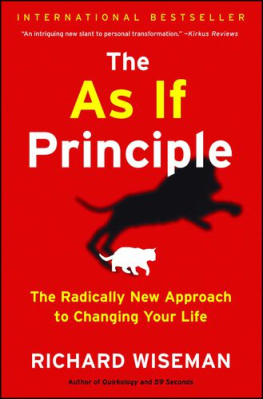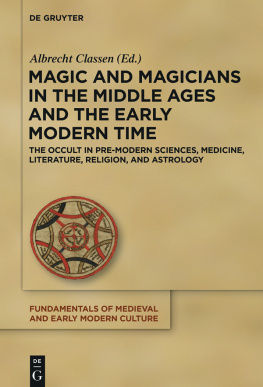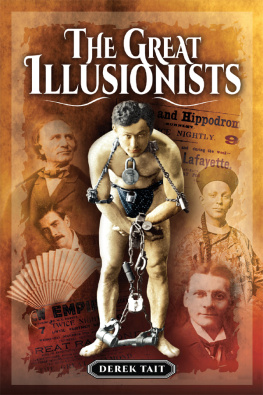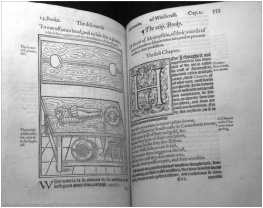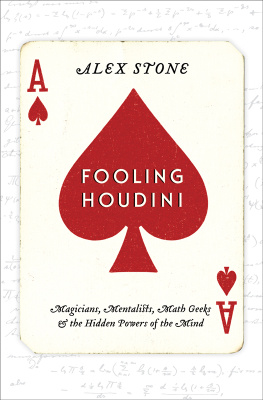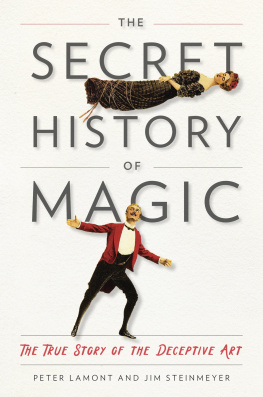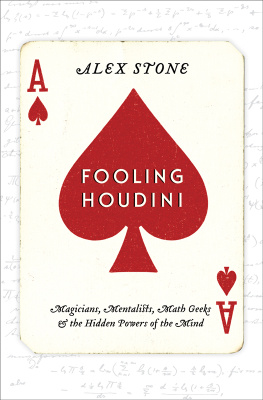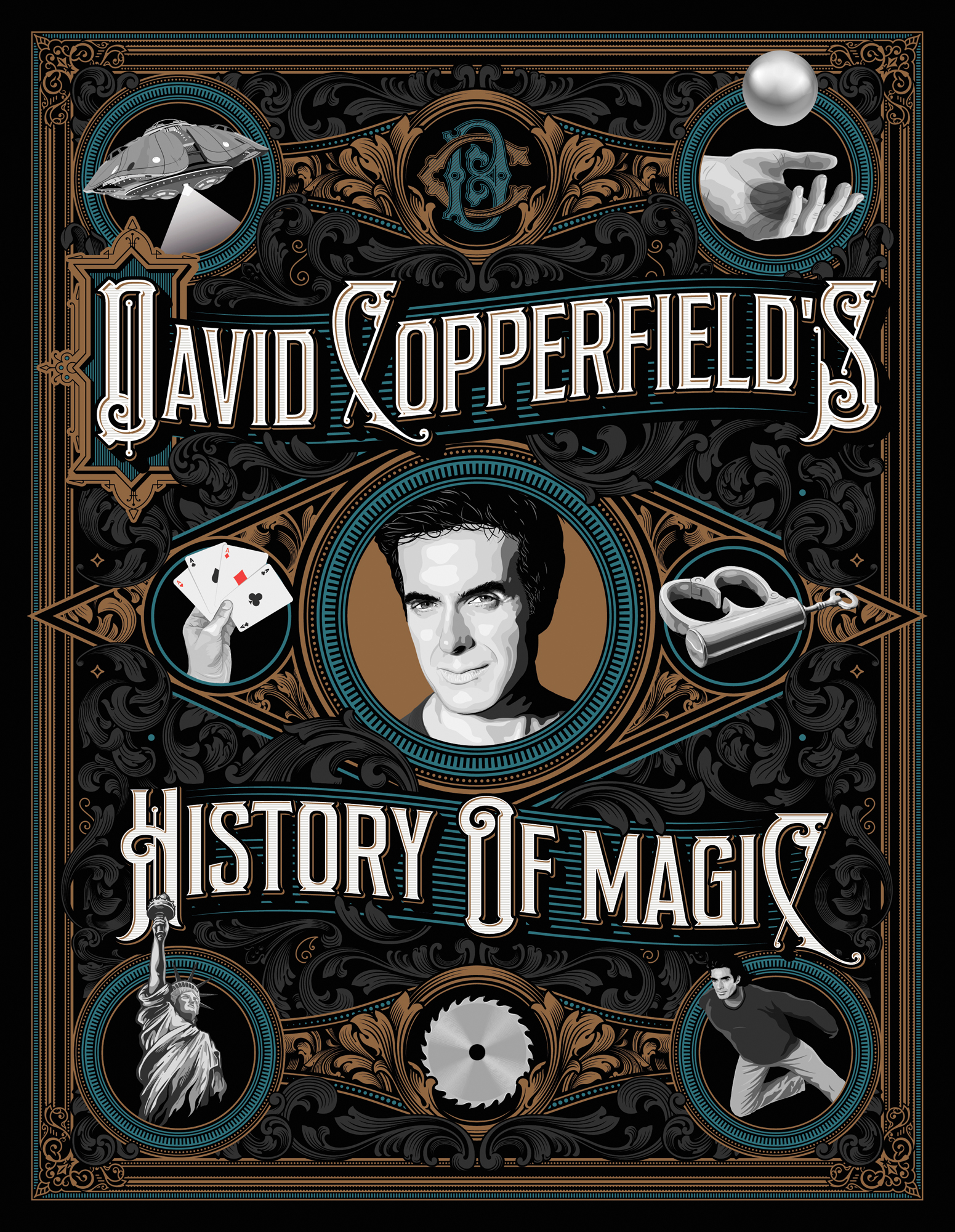Contents
Guide
David Copperfields History of Magic
To my family, Chloe, Sky, Audrey, and Dylan for their unwavering love, and for everyone searching for magic, challenging the impossible, fighting for your dreams.
Introduction
Magic matters. It transports people into a world in which the impossible appears possible. Precious items appear out of nowhere, objects defy gravity, and people are sawed in half and magically restored. Watching a great magic show opens peoples minds and inspires them to achieve the extraordinary in their everyday lives.
Magic has also changed the world. Throughout history, inventors, engineers, and scientists have been fascinated by the conjuring arts. For instance, Leonardo da Vinci frequently collaborated with Luca Pacioli, the fifteenth-century mathematician who helped to lay the foundations for modern-day accountancy. Pacioli created one of the earliest known European books to be largely devoted to magic (De Viribus Quantitatis) and described the secrets to several impressive miracles, including how to bathe your hands in molten lead and have an egg walk across a tabletop. Similarly, one of the pioneers of modern-day cinema, Georges Mlis, was a great stage illusionist, and drew heavily on his background in magic and storytelling to create his innovative and influential films. In 1902, Mlis made a film about traveling to the Moon and just over sixty years later that fantasy became fact. Over time, many other magicians have inspired visionaries and technologists to transform illusion into reality.
Magic can also reveal fascinating insights into the human mind. Every magic performance is a field experiment in psychology, and magicians have to know how to influence an audiences attention, awareness, and memory. Indeed, some of the founding figures in modern-day psychologysuch as the French psychologist Alfred Binet and American Joseph Jastrowworked with some of the most famous conjurors of their day in an attempt to understand the mysteries of perception.
In each generation, a group of people have devoted their lives to furthering the art of conjuring. I am proud to follow in their footsteps.
My real name is David Seth Kotkin and I was born in Metuchen, New Jersey. My mother worked in insurance and my father had a menswear store. I was a shy only child. From an early age I was a dreamer with a big imagination, and I was immersed in movies and television as they offered a tremendous sense of escape and hope. I was also a big fan of an innovative ventriloquist named Paul Winchell, and when I was around eight years old I received a vent puppet as a gift. I mastered the basics of ventriloquism and put together an act. It wasnt the greatest act in the world, but it got me in front of an audience.
I enjoyed performing and eventually asked my parents for a new ventriloquist figure. My mother took me to a magic store in New York City and the moment that I set foot in that special place I felt as if I had arrived home. I never did buy that new puppet but instead I became spellbound with magic. All these years later its still the driving passion in my life.
When I was ten years old I adopted the stage name Davino the Boy Magician, and just two years later I became the youngest person to be accepted into the Society of American Magicians. Around the same time, I invented an illusion that was published in a classic series of magic books, the Tarbell Course in Magic. At the age of sixteen, I became a professor at New York University and was teaching a course on the art of magic. For some reason magic came naturally to me.
I eventually decided to have a career in the arts. A friend suggested that I take inspiration from the much-loved Charles Dickens novel and change my name to David Copperfield. My first major engagement came when I was offered the lead role in a musical comedy about a turn-of-the-century magician who exposed a fake psychic. The show was called The Magic Man and the producers at first wanted me to sing and perform magic. But after they heard my voice, many of my songs mysteriously vanished.
It was a great show and I thought that it was going to be the springboard to success. I was wrong. After the show closed I found it difficult to get work, and my girlfriend and I struggled to pay the bills. I used the downtime to think about how I could combine my love of magic with my passion for film and theatre. My heroes were creators like Orson Welles, Frank Capra, Gene Kelly, and Fred Astaire. All of them understood how to use their art to move an audience emotionally and I wanted to do the same through the medium of magic. I found that stories and context added meaning to my work, and I devised illusions that focused on love, friendship, and acceptance. I levitated an assistant to Gershwins American in Paris and created an imaginary game show called Lets Burn a Deal, where I appeared to destroy and restore money. Looking back, it was actually a surprisingly happy period of my life. I had no idea where the next dollar was coming from, but I enjoyed the blank page and had the freedom to create and develop.
Eager for work, I persistently knocked on doors until one of them opened. In 1977 I hosted a show for ABC, and the following year CBS offered me my own television special. I can remember my father putting up posters in his store window, saying, Please watch our son. Make his mom happy. Fortunately, the show was a hit and became an annual event. I was just twenty-two years old.
One network television special followed another, and over the years I have appeared to walk through the Great Wall of China, escaped from Alcatraz, caused a jet to vanish, and made the Statue of Liberty disappear. Throughout it all, stories and meaning remained the bedrock of my magic. Vanishing the Statue of Liberty symbolized what the world would be like without freedom and democracy, and celebrated the opportunities that America has offered to those coming to the country to make a new life for themselves. Years later, people still talk about that event.
On the face of it, my job is to perform the impossible. But when I see audience members being moved by my magic, I am moved, too: magic has the power to redirect people away from their worries and concerns and, perhaps most important of all, to inspire and to provide hope. Creating my illusions takes hard workI think of it as glorious tortureyet being able to bring a sense of wonder to people makes all of that effort worthwhile.
For more than thirty years Ive had a secret project. It all began with an American magician named John Mulholland. Born in 1898, Mulholland led an unconventional life that included him being recruited by the CIA in the 1950s and asked to write a training manual that taught spies how to use magical techniques in their covert work. Mulholland was also an avid historian and collector, amassing an impressive library of more than 20,000 magic books and journals. He died in 1970 and when his amazing library came up for sale in 1991, some magicians were worried that this important collection would be broken up. My friend, magician and historian Mike Caveney, suggested that I buy the collection and ensure that it remained intact.

